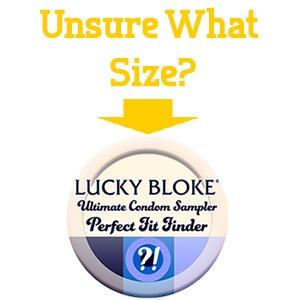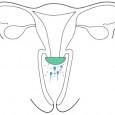The use of contraception is important for sexually active women in order to prevent pregnancy and dangerous STIs. While condoms and birth control pills are widely the most common forms of contraception used, there are other options out there for women seeking alternative ways to have protected sex and lower their chances of pregnancy.
The contraceptive sponge is a small, doughnut-shaped spermicide containing polyurethane sponge. It is inserted in the deepest part of the vagina and used as a form of contraception to prevent pregnancy.
The sponge prevents sperm from entering the uterus; held in place by the vagina muscles, it acts as a deterrent for sperm which can help prevent pregnancy.
Disclaimer: condom-sizes.org is supported by its readers. When you buy through links on our site, we may earn an affiliate commission. Learn more.
How does it work?
Essentially, the contraceptive sponge works as a vaginal barrier, preventing pregnancy by keeping the sperm from fertilizing the egg. The sponge releases spermicides that work by killing or paralyzing sperm that enter the vagina, forming a barrier wall to prevent the sperm from reaching the egg.
Spermicides are chemicals that prevent sperm from moving, and they come in gels, foams, and creams [1]. You must insert the contraceptive sponge deep into the vagina so that it covers the cervix properly about 10 minutes prior to intercourse.
The dimple on the side of the sponge is what fits over the cervix and works as a wall against the moving sperm by keeping the sponge in place during intercourse. The sponge is only intended for one-time use.
It remains effective for up to 24 hours and should be left in place inside the vagina for at least 6 hours after the last time you have sex. Also, it is important to remember not to douche for at least 6 hours after sex as well.
How effective is the contraceptive sponge?
The contraceptive sponge has an 88% rate of effectiveness [2]. While it is a safe and easy-to-use form of contraception, it is still not 100% effective in preventing pregnancy—so there is still a low chance you can get pregnant when using it.
Additionally, the contraceptive sponge does not protect you against STIs during sex, so you should not rely on the sponge as your only form of contraception. If you want to have wholly protective sex, it is best to use a condom in addition to the contraceptive sponge to increase the effectiveness of preventing pregnancy and STIs.
What you should know
The contraceptive sponge is a widely convenient form of birth control for women with many benefits. Its affordability, availability, and non-hormonal method of contraception makes it a safe and beneficial form of birth control that appeals to women looking for an alternative way to protect themselves against pregnancy.
However, it is important to be aware of the risks associated with using the contraceptive sponge, as well as understanding everything you need to know about this form of contraception before using it.
Possible risks and disadvantages
- Toxic Shock Syndrome (TSS): Contraceptive sponges pose a very lose risk of toxic shock syndrome, and women who have had toxic shock syndrome should not use the contraceptive sponge.
- Vaginal irritation: Contraceptive sponges can also cause vaginal irritation as a side effect
- Vaginal dryness: Some women say that the contraceptive sponge makes sex too dry
- Can be difficult to insert or remove
- Can increase the risk of transmitting HIV/AIDS
- Can’t be used by women who have given birth within the last 6 weeks
- Yeast infections: There is an increased risk of yeast infections if the sponge is left in place inside the vagina for longer than 24-30 hours [3]
- Allergic reactions: Women who are allergic to sulfites or polyurethane should not use the sponge
- Messiness
- Increase risk of urinary tract infection.
- Low efficacy for women who have given birth: The sponge is less effective against pregnancy for women who have already had a baby
Using the contraceptive sponge may be an appealing choice for women who prefer the use of a non-hormonal contraceptive method, want convenience, are breastfeeding, are not able to use birth control for health reasons, and are looking for a back-up contraceptive method.
The contraceptive sponge should not be used by women who have a reproductive tract infection, vaginal obstruction, recent abortion, childbirth, or miscarriage, or if they are experiencing any kind of vaginal bleeding. The sponge should not be used during menstruation.
It is also important to note that while the contraceptive sponge has its benefits, it is not the most effective form of contraception available. The contraceptive sponge is available in most pharmacies and some supermarkets without a prescription.
If women wish to be protected against STIs, they may want to consider using another form of contraception such as a condom in addition to wearing the contraceptive sponge.
References:
- https://www.drugbank.ca/drugs/DB06804
- https://youngwomenshealth.org/2013/08/22/contraceptive-sponge/
- https://www.healthywomen.org/condition/yeast-infections





